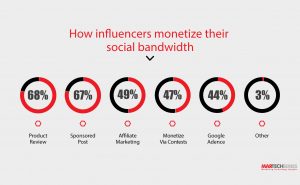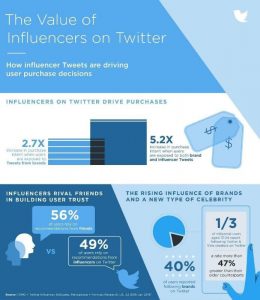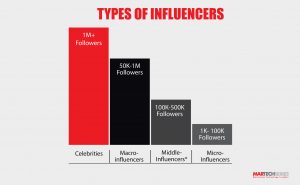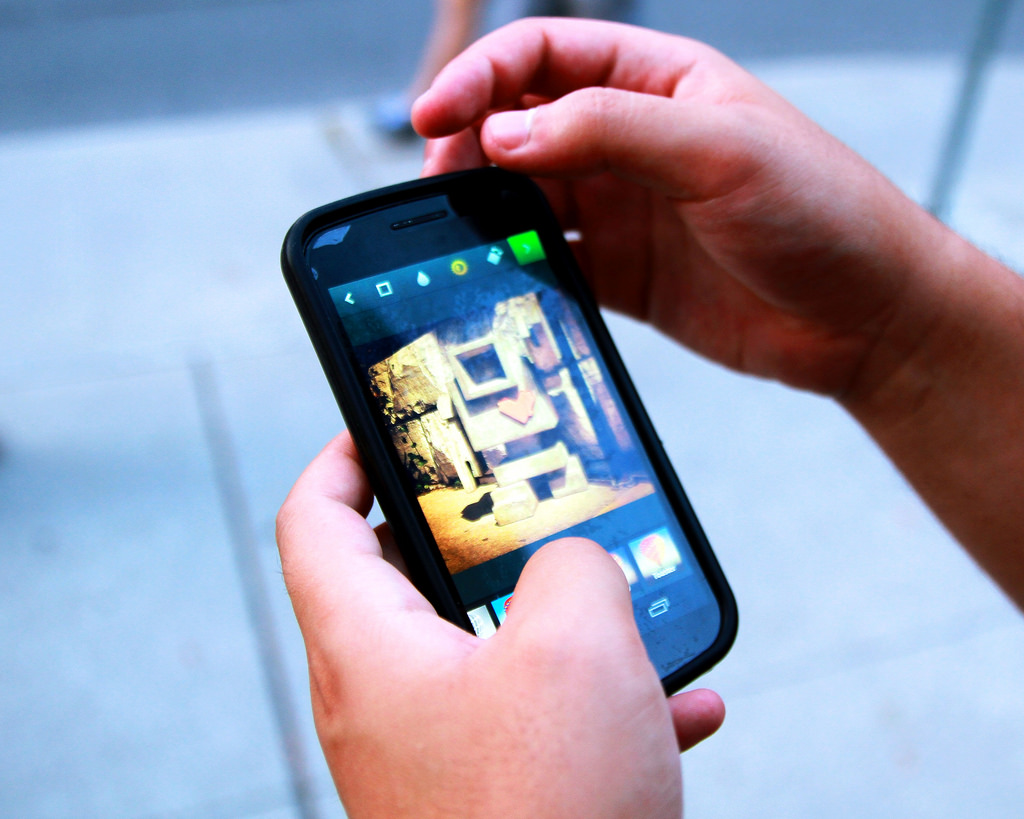“A brand is no longer what we tell the consumer it is — it is what consumers tell each other it is.” – Scott Cook, founder and CEO of Intuit.
When consumers turn into your influencers, it is a boon towards generating more output from your marketing efforts. Influencer marketing is a definitive trend on the rise acknowledged by top marketers. Traditionally used by consumer brands to tell their brand stories, marketers adopting influencers for B2B promotion is a recent phenomenon. For valuable lead generation and sales conversion, marketers take the notch one rung higher, introducing – “B2B Influencer Marketing”.
Between 2014 and 2016, influencer marketing emerged as one of the most powerful marketing strategies, especially from the viewpoints of content syndication and social recommendations.

In 2017, CMOs are expected to raise their B2B influencer marketing budgets to secure a broader set of corporate objectives. While most marketers still prefer to stay away from influencers, its relevance in marketing technology stack can’t be overlooked anymore. It’s time to build-up to one of the most forward-thinking marketing technology in 2017. Why?
Because influencer marketing will be the command center for marketers to leverage social monitoring and interactive content platforms.
B2B Influencer Marketing: Evaluating the Trust Factor
Influencer marketing may have rocketed as one of the most credible brand promotion platforms, but there still lies a huge gap between its implementation and ROI evaluation. As marketers look for intelligent tools to drive their social media campaigns and engage the audience with interactive content, influencer marketing is all about choosing the right pilot for the free skies.
Here’s what Influencer Marketing is set out to achieve in 2017.
- Amplified content distribution with paid influencing
Influencer marketing is a credible facet of word-of-mouth marketing. Content distribution is one of the most overlooked segments of digital marketing campaigns. Adding influencers as a medium of content distribution really helps drive paid campaigns — SEO, PPC, native advertisements, video, and email. Through people (influencers), marketers can amplify their brand reach using an existing content platform that has already been invested in.
- Micro-level influencing
Native advertising, account based marketing, hyper-personalization, and content automation may all seem attractive and unflinchingly hot topics to explore in marketing strategies, deploying Influencer Marketing invariably drives more audience engagement. For niche products and services, customers are 82% more likely to trust the micro influencer recommendations and reviews about the brand than those using social celebrity (macro influencers).

As influencers create their own content and drivers, they gradually become the creative pillars of the brand, buying a steady stream of highly engaged, hyper-attentive social media users.
- Local-to-global activation
Marketing campaigns are growing organically from the local grassroots to evolve into a global phenomenon. Influencers – key managers of local community relationships drive local-to-global magnification. They allow marketers to penetrate niche markets with a very customer-friendly mentality, delivering high impact along with resonating brand engagement.
- Omnichannel brand engagement
Blog-only content remains the top platform for engaging audiences across the web, mobile and social. Live messaging, video interaction and even email syndication are steadily replacing blog-only interactions. Influencers are developing independent cross-channel content with interactions, delivering a nice brand-specific social marketing mix. Marketers attest to the importance of content quality as much as its distribution channel.
- Ditch self-promotion; avoid brand clash
Two brands may tell the same story and pitch the same set of benefits. Influencers are ice-breakers, raconteurs, and endorsers, all rolled into one. Brand loyalty arrives when marketers ditch self-promotion activities and mindfully avoid the brand-clash with competitors.
Cutting through the native self-promotion gambit can generate higher mileage from social media campaigns. Influencer marketing offers massive content value up-front by investing in real-life experiences.
Live feeds, social messaging and emails with hyper-personalized 1:1 audience engagement helps build stronger and more trustworthy relationships. Influencer marketing is a definitive step towards this.
- Dodge past the ad blockers
Ad blockers—the biggest threat to advertisers. There are two ways of circumventing ad blockers. The first option is to deploy an ad blocking detector and wait for the customer to turn off the blocker. Left to chance, most marketers miss out on generating returns from their content despite a flawless distribution platform.
The second option is to create visually attractive ads. Again, a costly effort considering the creative resources that go into it. Therefore, influencer marketing becomes a reliable solution to circumvent ad blocking systems at fraction of the cost that goes into creating interactive ads or in deploying ad blocking detectors.
Influencers are creators and publishers of their own content. This encourages audiences to experience ad content as a genuine voice of the influencer. It’s not marketing trickery; just well-received guidance.
- Build a diverse native SEO-driven profile
SEO is still the most important element of content development. Influencers with high-authority domains generate organic backlinks with high “shareable quotient”, which in return improves your link profile. Marketers leveraging influencer marketing can significantly quash negative brand experiences with credible high-authority content and follower messages.
Influencer marketing is perfect for building and boosting SEO efforts at lower costs.
- Quick attribution
B2B buyers are more likely to buy a service or product from a marketplace based on referrals over direct promotions. One of the major factors pushing influencers to the top marketing funnel is its quick, reliable attribution. By integrating legacy CRMs with influencer marketing, marketers can accurately measure the relevance of opinion leaders on campaigns and the resultant conversion.
Cons of Influencer Marketing
Where do marketers mostly go wrong with their influencer marketing strategies? Marketers, who have burnt their hands with influencers, acknowledge why it is so hard to get the right marketing mix with them.
Lack of accountability kills reputation
One of the biggest pitfalls is the lack of influencer accountability. It is very hard to tell if the influencer is an endorser or a genuine user, based on the content. 2016 showed how “Fake News” made headlines and broke brand propriety with callous returns. It’s challenging to generate new ideas every time with limited angles to promote brands across various platforms.
Lack of qualitative and quantitative metrics to measure influencer legitimacy makes it harder to determine the effectiveness of your campaigns. Without accountability, influencer marketing is a hollow strategy.
Influencers are real people, not commodities

Influencers can’t magically grow a brand into something worth talking about. Marketers should be ready to brainstorm with the influencers about the product and invest in their networks. Authentic brand-audience engagement starts with genuine human interaction that only influencers can provide.
Missing out on journalistic, data-rich content
B2B marketers can do so much more with influencer marketing only if they encourage their assets to provide data-rich, well-researched content with a journalistic perspective. With enough on the analytics dashboard for marketers, influencers can leverage the analytics, connect dots and create experiences for customers that turn to actions.
Overlooking automation in influencer marketing
Automation in influencer marketing is the missing cog in contemporary marketing stack. Creating bespoke content and acquiring self-service platforms to drive that content is a hefty expense. Before implementing influencer marketing get your ducks in a row. One of them is to follow the FTC Endorsement Rules. Automation enables marketers to identify relevant FTC-endorsed influencers and acquire mass-trending content from them.
To turn efforts into sales results, marketers need to empower influencer content with marketing automation with the right mix of self-service platforms and turnkey performance optimizers. By funding live engagement opportunities to influencers, marketers can open up a wide spectrum of pre-purchase, purchase, and post-purchase data. Automation in influencer marketing can maximize the content’s reach with highly optimized distribution.
Taking the High Road with Influencer Marketing
The biggest mistake you can do with influencer marketing is not do it all!
Influencer marketing can drive overall business strategy, fitting in not just as part of the content strategy, but also as social, PR, and mass engagement strategies. Add to it the features of cognitive marketing technology and voila, you can reinvent omnichannel lead generation. Backed by a strong collaboration with marketers and 24/7 interaction with customers, influencer marketing is all set to become the most reliable brand validation marketing technology.












Comments are closed.